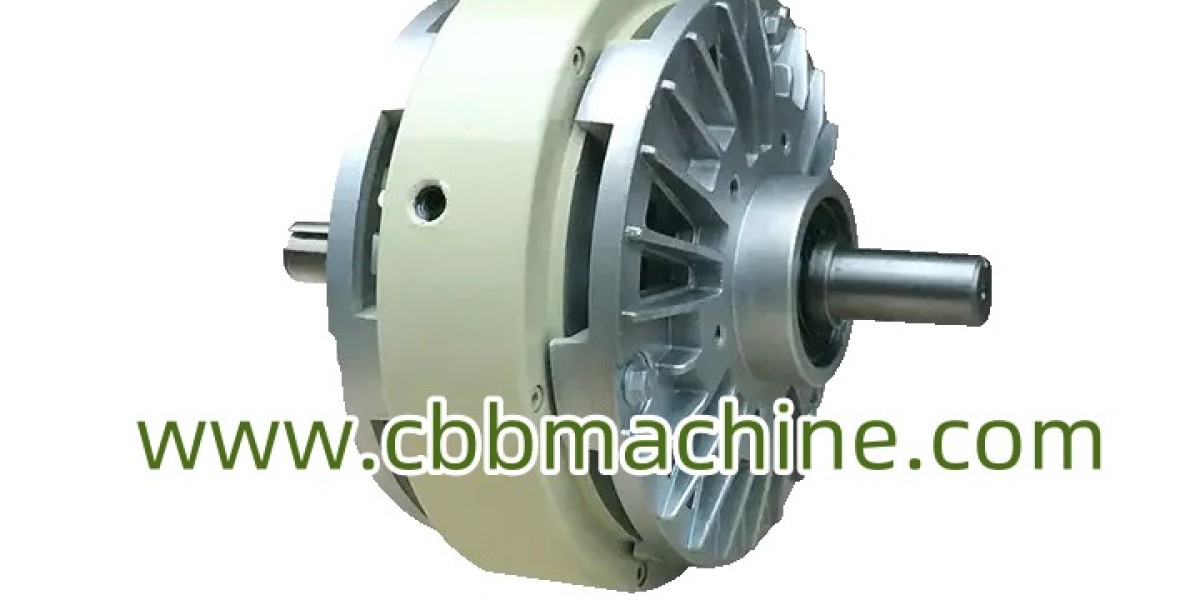Maximizing Efficiency with Magnetic Powder Brakes in Industrial Applications
In modern industrial environments, where efficiency and precision are paramount, machinery must function flawlessly, even under demanding conditions. One critical component that has gained prominence in various industries is the Magnetic Powder Brake. This advanced technology offers a non-contact solution for controlling torque and speed, ensuring smooth operation and increasing the lifespan of industrial machinery.
In this blog, we will explore the benefits of Magnetic Powder Brakes, how they work, and their role in improving performance across diverse applications.
What is a Magnetic Powder Brake ?
A Magnetic Powder Brake is a torque control device used in rotating machinery to adjust the braking force without physical contact between components. The brake works by utilizing magnetic fields to control a fine magnetic powder suspended between a rotor and a stator. The rotor is connected to the machinery's shaft, while the stator contains an electromagnetic coil.
When an electrical current flows through the coil, a magnetic field is generated, which causes the powder to form a chain-like structure. This creates resistance, and the level of resistance can be precisely adjusted by changing the electric current. This allows for accurate control over the braking force applied to the rotor, which in turn controls the speed and torque of the machinery.
Why Choose Magnetic Powder Brakes?
1. Precise Torque Control
One of the standout features of a Magnetic Powder Brake is its ability to provide highly precise torque control. Whether you're working with winding systems, conveyor belts, or printing presses, having the ability to adjust the braking force in real-time is essential to maintaining smooth operations. The braking force can be modified instantly by adjusting the current, offering the operator fine-tuned control over the machine’s performance.
This level of precision prevents issues such as material breakage or misalignment, especially in sensitive industries like textile manufacturing, paper production, or film processing.
2. Non-Contact Operation
The Magnetic Powder Brake operates through electromagnetic forces rather than physical friction. This non-contact operation means that there are fewer parts subject to wear and tear. In traditional friction-based brakes, the physical interaction between components causes them to degrade over time, leading to frequent maintenance and part replacements.
By eliminating the need for physical contact, the Magnetic Powder Brake significantly reduces maintenance requirements, extends the life of the brake system, and minimizes downtime. This translates to lower operational costs and improved overall efficiency.
3. Smooth, Gradual Braking
Many industrial processes require smooth and gradual braking to avoid sudden shifts that could disrupt the production flow or damage materials. The Magnetic Powder Brake provides this ability by applying even, consistent resistance during deceleration. This is particularly crucial in applications such as printing or packaging, where abrupt changes in speed could cause alignment issues, misprints, or damaged products.
With the Magnetic Powder Brake, operations can continue seamlessly without abrupt jerks or sudden stops, leading to higher-quality products and a more stable production environment.
4. Lower Maintenance Costs
Because Magnetic Powder Brakes operate without physical friction, they experience far less wear and tear compared to traditional braking systems. This not only reduces the need for regular maintenance but also minimizes the risk of unexpected failures. Machines equipped with Magnetic Powder Brakes are less likely to suffer from overheating, as the non-contact nature of the brake reduces friction-generated heat.
With fewer breakdowns and longer intervals between maintenance checks, industries can save significant amounts on repair costs, allowing for smoother operations and more efficient use of resources.
5. High-Speed Capability
Industrial machines often need to operate at high speeds, and in these high-speed environments, consistent control over torque and braking is crucial. Magnetic Powder Brakes excel in these conditions. They offer reliable performance even at high rotational speeds, preventing overheating or performance degradation.
Whether you're working in fast-paced manufacturing, packaging, or printing environments, the Magnetic Powder Brake ensures your machines run smoothly without compromising their speed or efficiency.
Key Applications of Magnetic Powder Brakes
The versatility of Magnetic Powder Brakes makes them indispensable in various industries. Here are some of the key applications:
1. Winding and Unwinding Systems
In industries such as textiles, paper, and film manufacturing, winding and unwinding systems require precise tension control to ensure the material is handled without damage. A Magnetic Powder Brake regulates the torque during these operations, ensuring that the material is wound or unwound at the correct speed and tension. This reduces the risk of over-stretching or tearing the material, resulting in higher quality and less waste.
2. Packaging Machinery
In packaging lines, the need for precise control over speed and torque is paramount. Magnetic Powder Brakes are commonly used to control the movement of packaging machinery, ensuring smooth operation during processes such as filling, sealing, and labeling. By maintaining consistent tension, the brake helps prevent jams and ensures that products are packaged efficiently and accurately.
3. Printing Presses
For printing presses, controlling the speed and tension of the paper is crucial to avoid paper jams or misalignments. Magnetic Powder Brakes help regulate the paper feed in printing systems, ensuring that the paper moves smoothly and at the correct tension. This ensures high-quality prints with minimal defects, improving the overall efficiency of the printing process.
4. Conveyor Systems
In automated production lines, conveyor systems transport goods at high speeds, and maintaining control over the speed is essential. Magnetic Powder Brakes are used to regulate the speed of conveyor belts, preventing materials from being damaged or displaced due to abrupt movements. This enhances the reliability of the system and ensures smooth, uninterrupted operations.
5. Test Equipment and Load Simulation
Magnetic Powder Brakes are also used in testing and load simulation applications. By adjusting the braking force, engineers can simulate different loading conditions, testing the performance and durability of mechanical systems. This makes Magnetic Powder Brakes a valuable tool for research and development, as well as quality control.
Conclusion
Incorporating a Magnetic Powder Brake into your industrial machinery offers numerous benefits, including precise torque control, reduced maintenance costs, smoother operation, and improved reliability, particularly in high-speed applications. With its non-contact operation and ability to provide gradual braking, this technology is a game-changer for industries such as printing, packaging, textiles, and material handling.
Whether you’re looking to improve efficiency, reduce downtime, or extend the lifespan of your equipment, a Magnetic Powder Brake can be a vital addition to your machinery.



